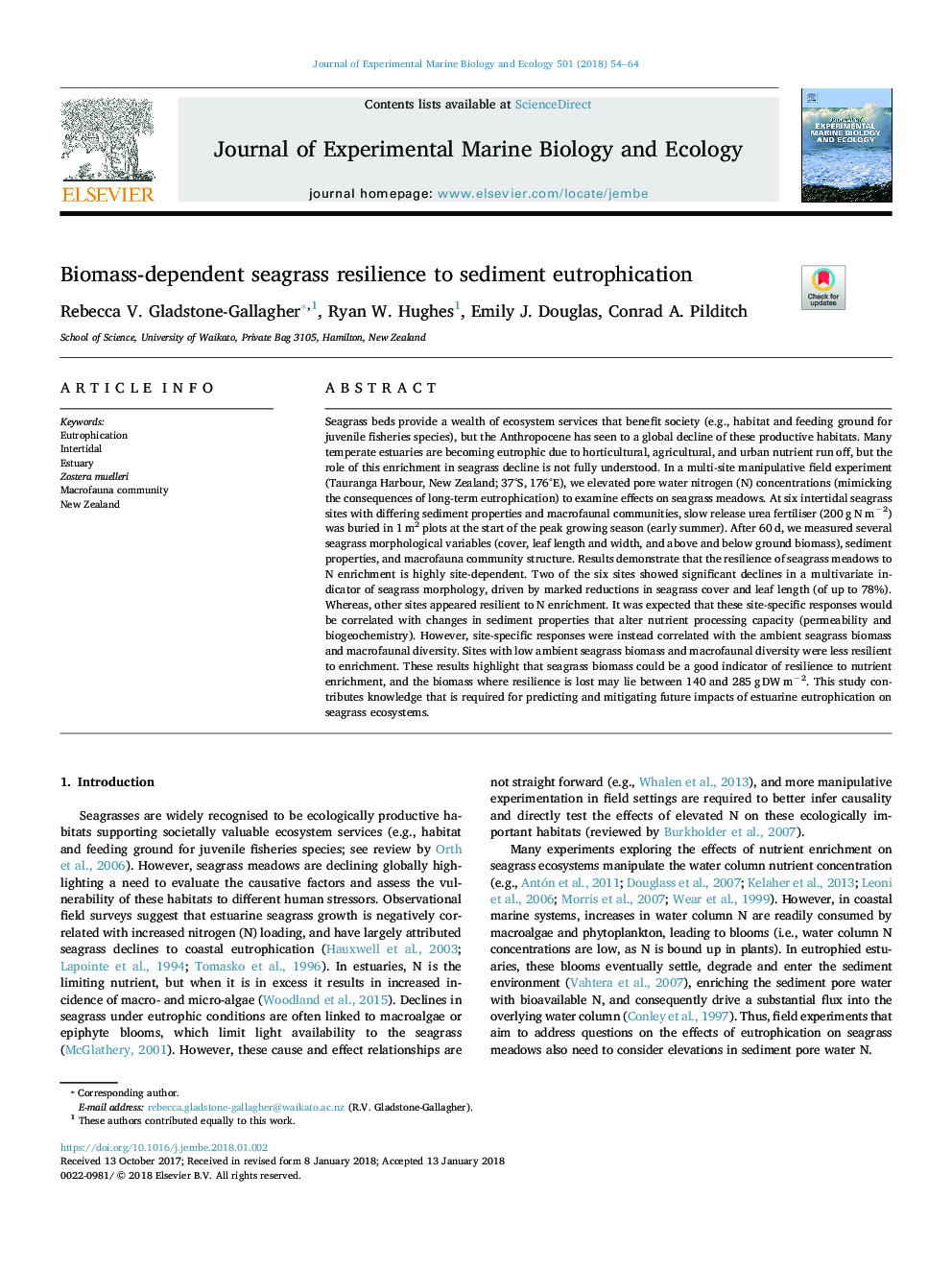| Article ID | Journal | Published Year | Pages | File Type |
|---|---|---|---|---|
| 8848980 | Journal of Experimental Marine Biology and Ecology | 2018 | 11 Pages |
Abstract
Seagrass beds provide a wealth of ecosystem services that benefit society (e.g., habitat and feeding ground for juvenile fisheries species), but the Anthropocene has seen to a global decline of these productive habitats. Many temperate estuaries are becoming eutrophic due to horticultural, agricultural, and urban nutrient run off, but the role of this enrichment in seagrass decline is not fully understood. In a multi-site manipulative field experiment (Tauranga Harbour, New Zealand; 37°S, 176°E), we elevated pore water nitrogen (N) concentrations (mimicking the consequences of long-term eutrophication) to examine effects on seagrass meadows. At six intertidal seagrass sites with differing sediment properties and macrofaunal communities, slow release urea fertiliser (200â¯gâ¯Nâ¯mâ2) was buried in 1â¯m2 plots at the start of the peak growing season (early summer). After 60â¯d, we measured several seagrass morphological variables (cover, leaf length and width, and above and below ground biomass), sediment properties, and macrofauna community structure. Results demonstrate that the resilience of seagrass meadows to N enrichment is highly site-dependent. Two of the six sites showed significant declines in a multivariate indicator of seagrass morphology, driven by marked reductions in seagrass cover and leaf length (of up to 78%). Whereas, other sites appeared resilient to N enrichment. It was expected that these site-specific responses would be correlated with changes in sediment properties that alter nutrient processing capacity (permeability and biogeochemistry). However, site-specific responses were instead correlated with the ambient seagrass biomass and macrofaunal diversity. Sites with low ambient seagrass biomass and macrofaunal diversity were less resilient to enrichment. These results highlight that seagrass biomass could be a good indicator of resilience to nutrient enrichment, and the biomass where resilience is lost may lie between 140 and 285â¯gâ¯DWâ¯mâ2. This study contributes knowledge that is required for predicting and mitigating future impacts of estuarine eutrophication on seagrass ecosystems.
Related Topics
Life Sciences
Agricultural and Biological Sciences
Aquatic Science
Authors
Rebecca V. Gladstone-Gallagher, Ryan W. Hughes, Emily J. Douglas, Conrad A. Pilditch,
